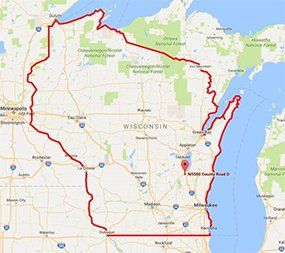Understanding the Stages of Your Roof's Lifespan
- By Karina Hueckman
- •
- 13 Aug, 2020
- •
Your home's roofing system goes through stages, just like people do. And it needs proper care and attention, just like people do.

When it comes to taking care of your home, many people often find themselves pushing the maintenance of their roof to the back of their minds until they find themselves in a frustrating situation with leaking, missing shingles or algae streaks. Weathering is the culprit for why 50% of roofs fail prematurely. However, this doesn’t have to be the fate of your roof, as taking proper roofing precautions with maintenance can help you get the most out of it. Understanding the three stages of a roof’s lifespan will help you gauge what you should be doing for your home. Taking initiative right away in choosing the right contractor and warranty program will assist you in all stages of your roof’s lifespan.
Stage 1: New Roof. This phase lasts from the birth of the roof up until about year two. While maintenance of the roof isn't a priority in this new phase, it is crucial to be involved in the process of the installation. Keep a close eye on the design of the roof. Ask about the reliability and durability of the materials being used for your new roof. While it may be more expensive for premium materials, it is better to pay now rather than later. You can avoid extra roofing costs down the road by spending more on higher quality materials that won’t buckle under extreme weather conditions. Many roofing companies offer a variety of warranty options for your roof to help minimize maintenance costs down the road as well.
Spending money on roofing installation will often take a backseat, as it is a less glamorous investment than others. However making careful decisions during this stage of your roof’s lifespan can help save you time, money and stress in the long run. Choosing the right roofing company is one of the most important first decisions you can make. Certain contractors can offer better warranty options than others, so do your research on which company will protect your home’s roofing system the best.
With only 2% of roofing contractors awarded this status, the GAF Master Elite certification allows JF Lopez Roofing to offer exclusive options such as the Golden Pledge, ensuring customers with GAF roofing materials up to a 50 year warranty for materials, 25 year warranty for labor, up to 130 mile per hour wind coverage and a one-time transfer to a new homeowner. Annual training allows the company to maintain this achievement while keeping up with industry standards, new installation practices and offering a variety of products and shingle colors.
Our company’s completion of the DECRA Metal training program also allows JF Lopez Roofing to offer a lifetime warranty on DECRA materials. This training has allowed complex installations such as the Hearthstone Historic House Museum to be possible.
Stage 2: Maintenance Period. This stage typically occurs after the second year all the way up to 15 years old. Maintenance is key during this period to ensure a long-lasting roof. This stage is often overlooked due to the “out of sight, out of mind” mentality that many homeowners may have. Consider the five tips below when taking action to properly maintain your roof.
- Keep an eye out for missing or damaged shingles, as they’re a lot cheaper to replace individually.
- Trim branches near your home to prevent falling leaves from pooling on your roof as well as broken branches from damaging the system during storms or extreme wind.
- Clean your gutters to allow proper drainage so that water does not pool on your roof.
- Acknowledge your chimney’s maintenance, as damage to it can also damage your roof.
- Reach out to a local contractor for an evaluation to detect any issues before they get bigger.
Stage 3: Re-Roofing Period.
Many lower quality residential roofs will typically last up to 15 years. However, proper maintenance could extend the lifespan up to 30 years. Higher quality roofs have the potential to last a minimum of 25 years and up to 50 years. When the time comes to get a new roof, it isn’t always obvious when that is. Not only should you consider the age of your roof, but do a walk-through with this checklist from American Dream Restoration
to identify if your home’s roof needs to be replaced. Consult your local roofing contractor for an expert opinion as well.
Familiarizing yourself with what a contractor can offer you before hiring will set the precedent for a healthy, long-lasting roofing system. Your roof's lifespan starts and ends with this decision, so be sure to acknowledge each stage of the cycle in order to give your roof the proper attention and care it needs.














